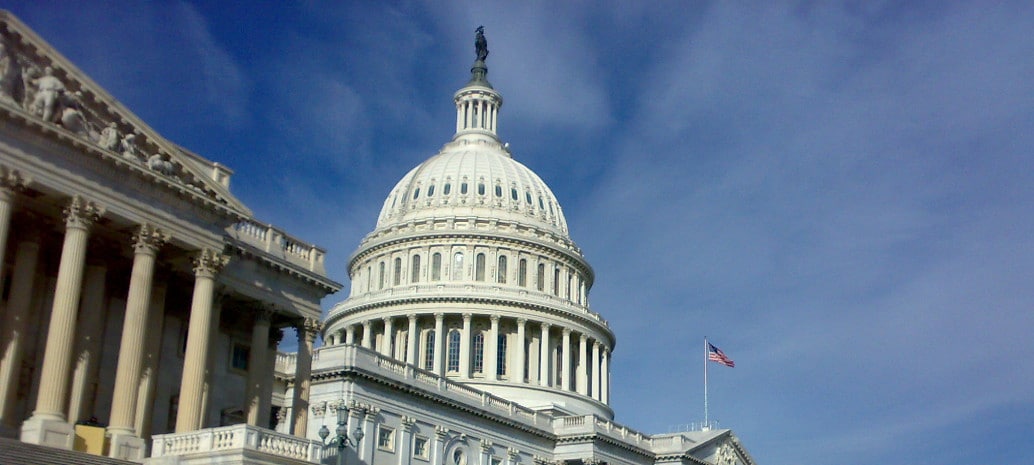With the November election clearly in sight, congressional Democrats have rolled out a 538-page climate action plan aimed at slashing U.S. carbon emissions to almost zero by 2050, while decarbonizing the country’s electric grid by 2040. Produced by the House Select Committee on the Climate Crisis, the plan also calls for 100% of new car sales to be zero-emission vehicles by 2035 and proposes unspecified “incentives” to drive local adoption of net-zero building codes across the country by 2030.
The plan’s strength is in its comprehensive scope — representing a national energy policy the country has long needed — with a timely focus on job creation and ensuring environmental justice and health and social benefits to low-income communities of color. However, its ambitious top-line goals are often backed up by calls for passage of already-introduced Democratic bills, none of which stand a chance in the Republican-dominated Senate.
For example, the report’s recommendation for an extension of the solar investment tax credit (ITC) to 2025 references similar provisions of the Grow Renewable Energy and Efficiency Now (GREEN) Act introduced by California Rep. Mike Thompson (D-Santa Rosa) on June 25. At the same time, a new ITC for standalone energy storage proposed in the GREEN Act is not specifically mentioned in the climate plan, although an ITC for combined heat and power, fuel cells and landfill gas is.
More ambitiously, the report does take on the role of the Federal Energy Regulatory Commission (FERC) in ensuring a level playing field for clean energy in wholesale markets and specifically cites FERC’s recent decision creating barriers to clean energy in the PJM market. It calls on Congress to “amend the Federal Power Act to clarify that state authority over electricity generation includes the provision of financial incentives for clean energy and that FERC may not establish rates that discriminate based on these state policies.”
Other recommendations aimed at ensuring solar industry support include:
- A “direct pay” option for the solar ITC, strongly supported by the industry as a way to stimulate residential solar sales which have been hard-hit by the Covid-19 pandemic. A similar direct-pay option for a storage ITC is contained in the GREEN Act.
- A two-year 20% increase in the solar ITC for systems under 20 kilowatts (kW), originally contained in a January 2019 bill introduced by Colorado Rep. Joe Neguse (D-Boulder)
- Amendments to the Federal Power and Public Utilities Regulatory Policies (PURPA) acts that would encourage utilities to include storage and other “non-transmission alternatives” in their transmission planning.
Winning over climate activists
Such provisions signal the success of lobbying efforts by solar and other clean energy groups, as well the sector’s arrival as a mainstream economic and political player. A supporting report from the policy research firm Energy Innovation projects that the plan could translate into clean energy markets that add up to 48 GW of new solar per year to the U.S. power grid by 2050.
Additional support from the industry was quick in coming.
Gregory Wetstone, president and CEO of the American Council on Renewable Energy (ACORE) called the plan “substantive, thorough and firmly grounded in science.”
“Pairing a national clean energy standard with smart tax incentives to attract capital, lower cost and accelerate renewable deployment is a proven formula for decarbonizing the grid,” Wetstone said in a publicly released statement.
Similarly, Kelly Speakes-Backman, CEO of the Energy Storage Association underlined the critical role of energy storage, and the GREEN Act standalone storage ITC, “for grid resilience, achieving net zero emissions, and bringing clean and advanced energy sources to our electric grid.”
Meanwhile, looking ahead to November, the plan also seeks to win over the party’s younger and more progressive environmental advocates.
Speaking on the steps of the Capitol at the official plan rollout, both House Speaker Nancy Pelosi (D-San Francisco) and committee chair Rep. Kathy Castor (D-Tampa) called out the role of climate activists and other outside stakeholders in helping to shape the plan and move it forward.
“They have transformed the conversation here and around the world,” Pelosi said. “We cannot succeed without the (public) mobilization they bring. We respect that; we count on that.”
This content is protected by copyright and may not be reused. If you want to cooperate with us and would like to reuse some of our content, please contact: editors@pv-magazine.com.








By submitting this form you agree to pv magazine using your data for the purposes of publishing your comment.
Your personal data will only be disclosed or otherwise transmitted to third parties for the purposes of spam filtering or if this is necessary for technical maintenance of the website. Any other transfer to third parties will not take place unless this is justified on the basis of applicable data protection regulations or if pv magazine is legally obliged to do so.
You may revoke this consent at any time with effect for the future, in which case your personal data will be deleted immediately. Otherwise, your data will be deleted if pv magazine has processed your request or the purpose of data storage is fulfilled.
Further information on data privacy can be found in our Data Protection Policy.